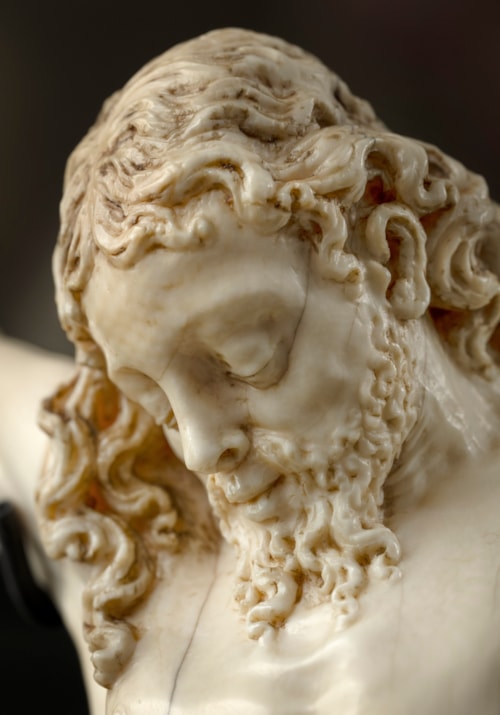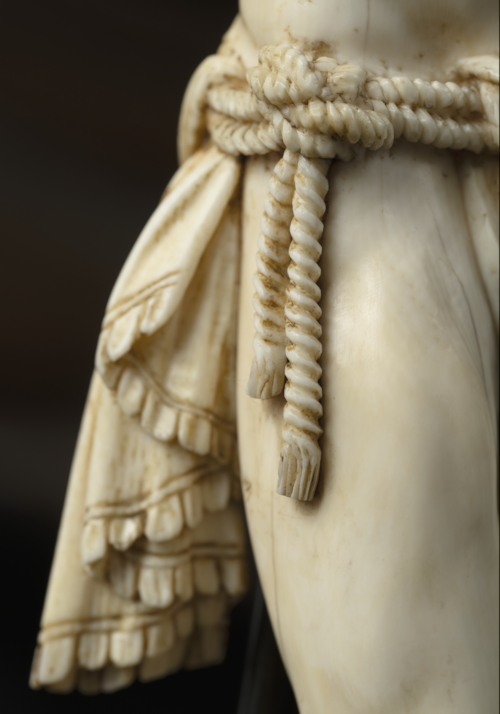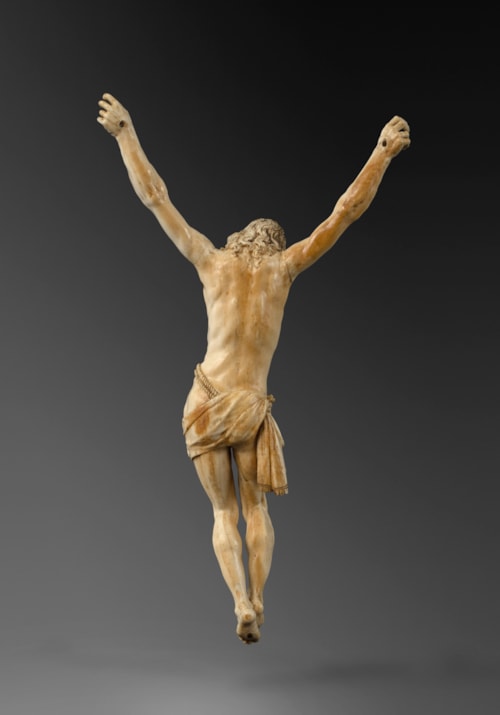Giovanni Batista Bissoni ((aka the Master of Guadalcanal)
(Genua 1600/20 - Genua 1657 )
Christ on the Cross
Giovanni Battista Bissoni first trained with his father, Domenico Bissoni (ante 1574-1637) who was a sculptor born in Bissone (Tessin) and active in Genoa. Giovanni Battista started his activity around the early 1630s and was celebrated by his biographer for the variety of his production, in small and large scale, in wood and in ivory. He renewed the typology of the Crucified Christ, based on models by the German ivory carver Georg Petel and the renown Flemish painter Anton Van Dyck, both active in Genoa in the 1620s (see L. Leoncini and D. Sanguineti (eds), Van Dyck e il Cristo spirante exh. cat. Genoa, Palazzo Reale, 2012).
This finely carved ivory figure of Christ crucified exemplifies the devotional craftsmanship of the Baroque period. With arms raised and head gently tilted, the figure conveys both physical suffering and spiritual transcendence. The anatomical precision—visible ribs, taut muscles, and delicately rendered veins—reflects the sculptor’s mastery of form and material. The loincloth, tied with a rope and draped in soft folds, adds a touch of realism and dignity.
Ivory, prized for its smooth texture and luminous quality, was often used for intimate religious objects intended for private devotion. The expressive posture and closed eyes of Christ evoke a moment of serene resignation, inviting contemplation on sacrifice and redemption.
This work stands as a testament to the intersection of faith and artistry, where technical virtuosity serves a deeply spiritual purpose.
+32 (0)478 38 18 29









